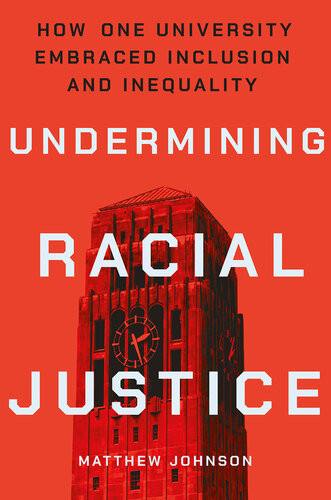

Most ebook files are in PDF format, so you can easily read them using various software such as Foxit Reader or directly on the Google Chrome browser.
Some ebook files are released by publishers in other formats such as .awz, .mobi, .epub, .fb2, etc. You may need to install specific software to read these formats on mobile/PC, such as Calibre.
Please read the tutorial at this link: https://ebookbell.com/faq
We offer FREE conversion to the popular formats you request; however, this may take some time. Therefore, right after payment, please email us, and we will try to provide the service as quickly as possible.
For some exceptional file formats or broken links (if any), please refrain from opening any disputes. Instead, email us first, and we will try to assist within a maximum of 6 hours.
EbookBell Team

4.3
8 reviewsOver the last sixty years, administrators on college campuses nationwide have responded to black campus activists by making racial inclusion and inequality compatible.
This bold argument is at the center of Matthew Johnson's powerful and controversial book. Focusing on the University of Michigan, often a key talking point in national debates about racial justice thanks to the contentious Gratz v. Bollinger 2003 Supreme Court case, Johnson argues that UM leaders incorporated black student dissent selectively into the institution's policies, practices, and values. This strategy was used to prevent activism from disrupting the institutional priorities that campus leaders deemed more important than racial justice. Despite knowing that racial disparities would likely continue, Johnson demonstrates that these administrators improbably saw themselves as champions of racial equity.
What Johnson contends in Undermining Racial Justice is not that good intentions resulted in unforeseen negative consequences, but that the people who created and maintained racial inequities at premier institutions of higher education across the United States firmly believed they had good intentions in spite of all the evidence to the contrary. The case of the University of Michigan fits into a broader pattern at elite colleges and universities and is a cautionary tale for all in higher education. As Matthew Johnson illustrates, inclusion has always been a secondary priority, and, as a result, the policies of the late 1970s and 1980s ushered in a new and enduring era of racial retrenchment on campuses nationwide.